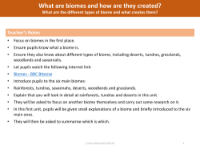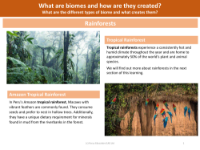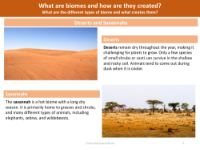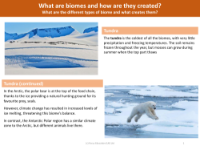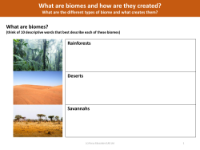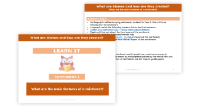What are different types of biomes and what creates them? - Presentation
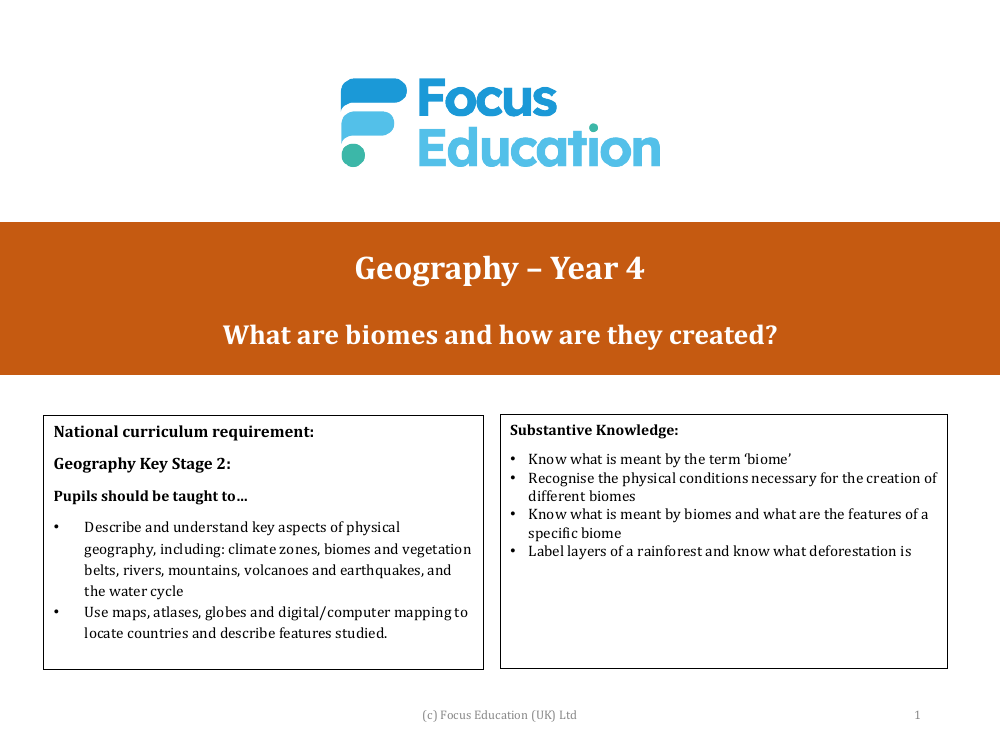
Biomes are vast regions of the Earth, each with a distinct climate, soil type, amount of light, and water availability, which together determine the variety of plant and animal life that can survive there. The National Curriculum for Geography at Key Stage 2 requires pupils to understand key aspects of physical geography, including biomes. In Year 4, students delve into the concept of biomes, exploring different types such as rainforests, tundras, grasslands, woodlands, savannahs, and deserts. These biomes are characterized by their unique environmental conditions; for example, tundras are known for their cold, frozen landscapes with short growing seasons, while deserts are defined by their minimal rainfall.
Students are encouraged to use various geographical skills and tools, such as maps, atlases, and graphs, to locate and describe these biomes. They learn to identify the main features of biomes, like the layered structure of rainforests and the implications of deforestation. They also compare and contrast different biomes, understanding the similarities and differences between, for instance, a tundra and a desert. This exploration includes examining how people have adapted to these diverse environments. The curriculum also emphasizes the importance of disciplinary knowledge, including the ability to use grid references and conduct research to present findings on specific biomes, fostering a comprehensive understanding of these vast ecological systems.
